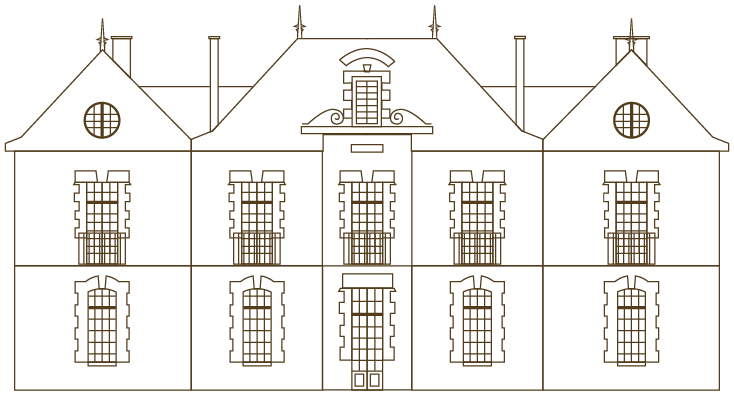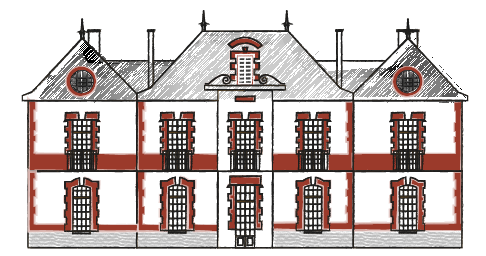The Château
Biography
Hello and welcome to the Chateau des Lys the family home of Marc and Laure Jouffrault. We hope you’ll love this beautiful building and it’s surrounding area as much as we do.
Thank you for visiting.
 A small potted history
A small potted history
Small condensed historical overview from which we learn every day some bribes on the history of the Castle and its surroundings. The Somme Valley has been the scene of many defining moments since prehistoric times. Julius Caesar set out to conquer the British coast from this shore. Harold Godwinson of Wessex, shipwrecked, was imprisoned in Saint-Valery-sur-Somme, before being released by William the Conqueror. The latter organized his own invasion fleet in the Bay of Somme when Harold changed his mind and refused to honor his promise to give the crown of England to William. The tower where Harold was imprisoned still exists today. Other subjects of Franco-English discord were settled in Crécy and Agincourt (transformed into “Agincourt” in English). Both places are located near the Castle and certified as a detour. Joan of Arc was also imprisoned in Saint-Valery-sur-Somme. The gateway to the town that she passes through on her way to her execution as well as most of the medieval town are still intact and particularly lovely. What possibilities of visits! To find out more, visit www.somme-tourisme.com
Sailly le sec was once a separate village. It was attached to the village of Flibeaucourt in 1908. The etymological origin of Sailly probably comes from the Latin salix which gives willow in French and salicelum, a place where willows grow. It could be that the name comes from the Conquest of Gaul by Julius Caesar. There is practically no vestige of the medieval village razed by the Spaniards in 1823. The oldest building today is the original castle of the village which houses the town hall. The first part of the Château des Lys was built in 1893. A Rail tycoon, Monsieur Sangnier, erected the building located in front, near the road, as a hunting lodge. These were normally the premises for a more ambitious building which would have been the castle. Three other buildings were erected nearby, probably to house his servants and serve as a stable. These are currently the gites. Originally the set was much larger. The property remained in the Sangnier family until the death of the last heir at the end of the First World War. The heir’s father, a pious man, donated the property to the Church in thanksgiving for having spared the family members during this war. The latter entrusted it to the congregation of the Brothers of the Christian Schools who made it a Catholic agricultural teaching establishment for boys, recognized for its discipline and its good results. At that time (between the wars) two wings were added to connect the main building to what became the Studio and Champêtre Gîtes. The left wing on the road side housed the chapel. There are some vestiges of this religious past that can be seen with the stained glass windows and several of the items of furniture scattered all over the building. The chapel itself has become a place of life with rooms. Finally you will be able to see (or meditate!) in front of a statue of the Virgin in the park and a Calvary at the bottom of the property. We believe the pond is original and predating and would have benefited from extensive refurbishment; it is home to an interesting colony of ducks.
During the 1980s, the school was closed and transformed into a reception center for outdoor classes and patronage, leaving excellent memories for the children of the country who were able to take full advantage of it. When the Brothers left 10 years later, the property was acquired by the neighboring farmer who divided it up, giving it its current configuration and reselling it to transform it into a holiday resort. For information, the brick red and white colors of the current buildings are typically Picardy. The small wood which surrounded the property of the Château des Lys was in the past part of an ancient forest, the Bois de Cantatre, which extended to Abbeville to the south east and to the forest of Crécy to the north east. Bronze Age burial sites have been discovered locally and some traces of Gallic villages. Unsurprisingly, legends tell of local druidic activities. A few wild boars and deer can be seen on occasion in the property, squirrels but also above all many moles… The Château des Lys remains a place sheltered from the rest of the world that we wish to preserve, by restoring if possible a little its past glory.




